It’s common to associate burying grounds with creepy stories and Halloween decorations, and it’s easy to see why. Many cemeteries are all but abandoned, leaving the headstones made to remember the dead to sink into the ground and be forgotten. Some old headstones are still cleaned and preserved because people care, which means that cemeteries and graveyards are havens for historical and genealogical information. There are burying grounds in America that still have stones dating from before the birth of our nation. It’s amazing to think that some American headstones have survived for more than 250 years, and in some cases are still legible. In many cases though, the carvings on gravemarkers wear away from exposure to the elements. There’s still a way to preserve the information on the marker, however, and there’s no better way to become familiar with the dead: Grave rubbing.
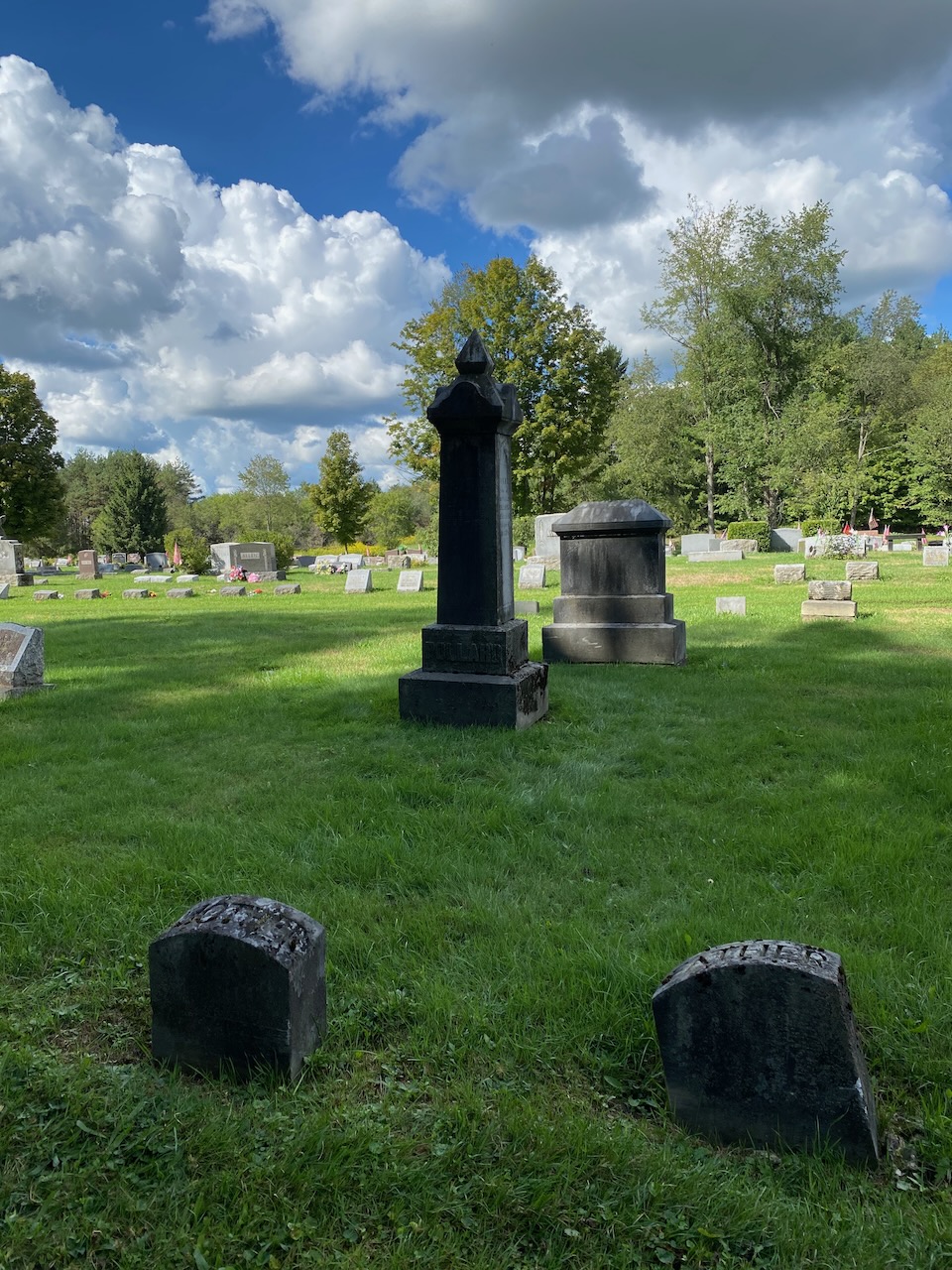
Fun Fact: Cemeteries and graveyards are often used interchangeably, but they’re not the same thing. Graveyards are affiliated with churches and usually located outside of their host church, while cemeteries have no connection to a church.
I became interested in grave rubbing through genealogy, which is the study of one’s ancestors. While I could get pictures online through Find A Grave, I wanted tangible copies of my ancestors’ gravestones. There are devoted cemetery volunteers on Find A Grave who take clear photos of headstones, but there are even more pictures of old grave markers that are illegible. I wanted to determine death dates by myself and bring home a copy of the stones made for my ancestors. We took a trip to New York recently, and one of the things I was most excited about was visiting cemeteries and going grave rubbing. One cemetery we visited is the final resting place for several Revolutionary War soldiers. At least three of my ancestors served as Patriots in the war and are buried there along with family. I’m very proud of my family history, so visiting my ancestors’ graves and making rubbings has definitely been one of my highlights of the year. It literally feels as though I’m carrying my family with me. Visiting any burial ground is a great way to spend time outdoors, whether you’re making rubbings to preserve information for a future generation, volunteering for the cemetery, or just reflecting on the lives gone by.
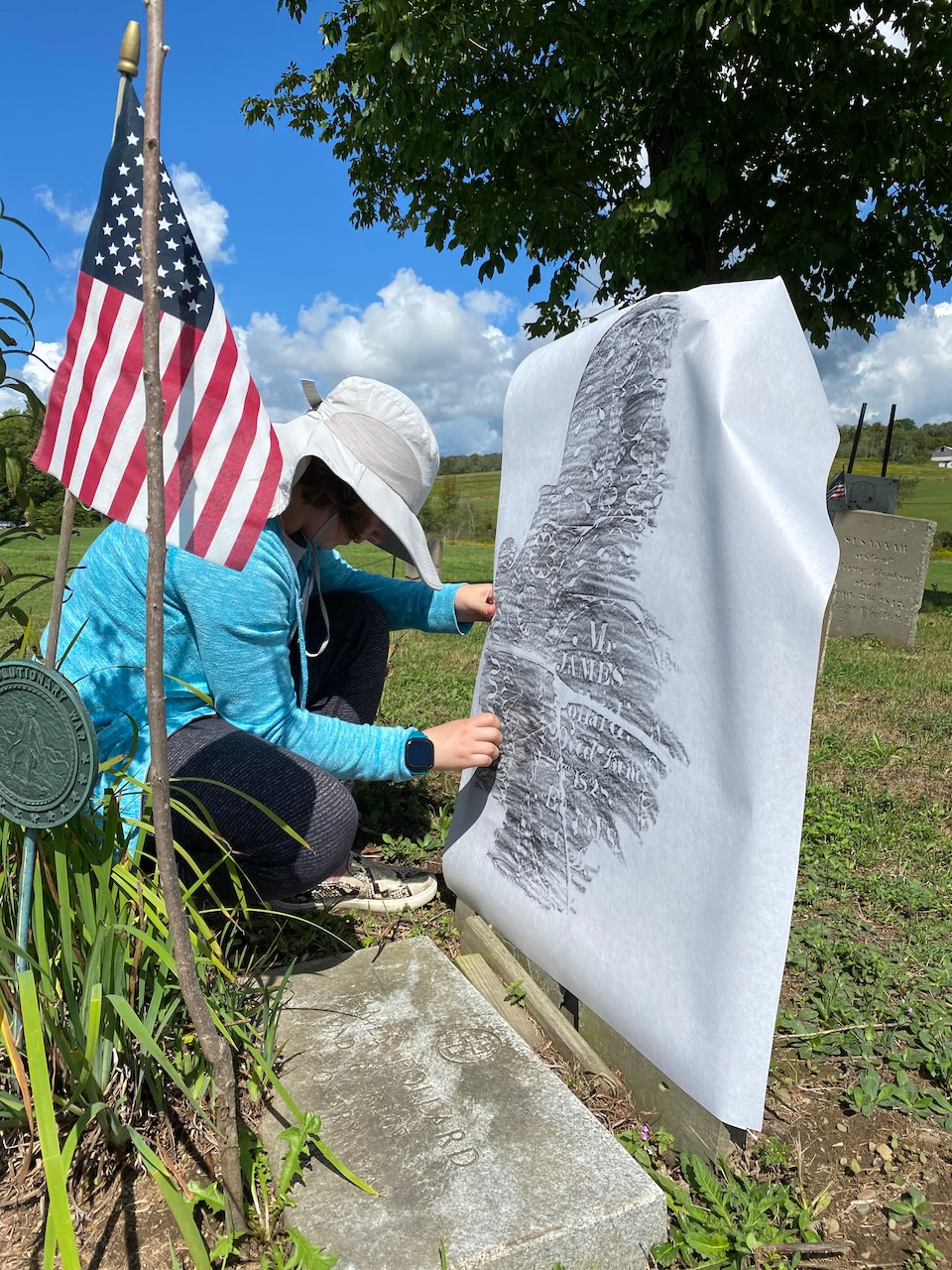
Grave rubbing can be as simple as taping paper to a headstone and rubbing a crayon across the paper. This transfers color to the raised areas of the grave marker, leaving you with a copy of the headstone’s indentations. This includes names and dates, detailed carvings and even stone texture. I had a limited amount of rubbing paper, so I picked my top grave to get a rubbing of. The marker I chose was made for a man named James Pollard, who enlisted multiple times throughout the Revolutionary War. The finished rubbing revealed lovely carvings that weren’t as easy to see on the stone. In another cemetery, I also made rubbings of James’s descendants through three generations. For each stone, I taped my rubbing paper onto the stone with masking tape and rubbed a wax cake over it as though with a crayon. Then I carefully removed the tape and rolled up the rubbing. I needed to brush some lichen away for a few gravestones, but most were quite clean. All in all, it’s a very simple process.
Having never been grave rubbing before, I opted to use a kit. I chose the Old Stone Rubbing kit, which you can find on the makers’ website gravestonerubbingsupplies.com or Amazon. The Old Stone Rubbing kit worked beautifully for a beginner like me, and contained everything I needed, including a handbook. My rubbing adventure couldn’t have been better, but grave rubbing isn’t something that every cemetery allows. Rubbing is even illegal in some places, or prohibited for certain graves. In my case, there were a couple cemetery caretakers that I asked permission from. They were quite friendly and more than happy to allow me to get rubbings of my ancestors. After some trouble reading a small cemetery map that I printed off, I found James’s descendants.
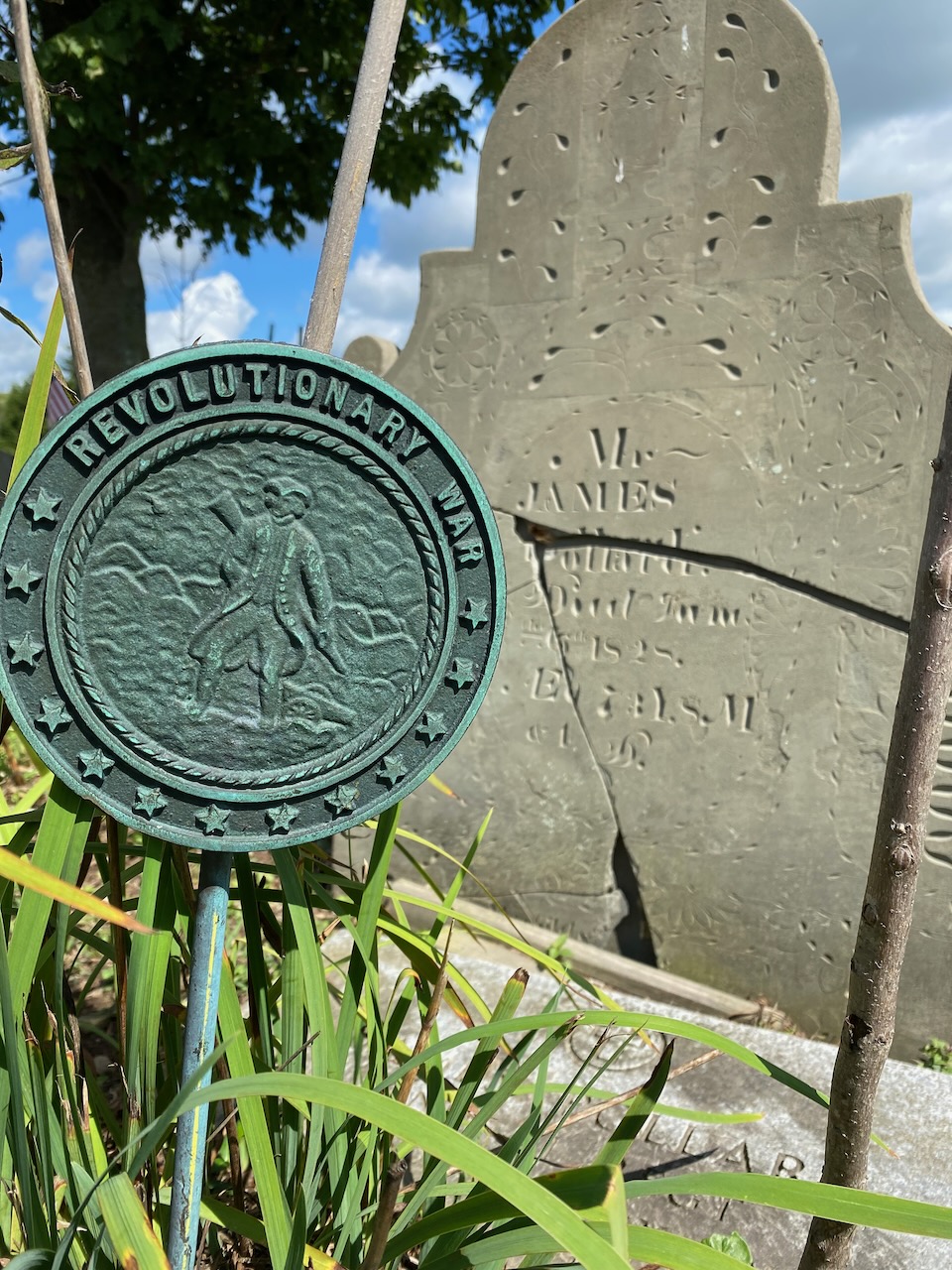
Along with permission, gravestone safety is also key, especially since rubbing applies pressure to the stone. If a headstone is crumbling, has large cracks, sounds hollow when tapped, or is fragile in any way, rubbing the stone could cause damage. My ancestor James’s headstone is completely broken in some places, but because someone took the stone away some years ago to repair it, it’s still sturdy enough to get a rubbing.
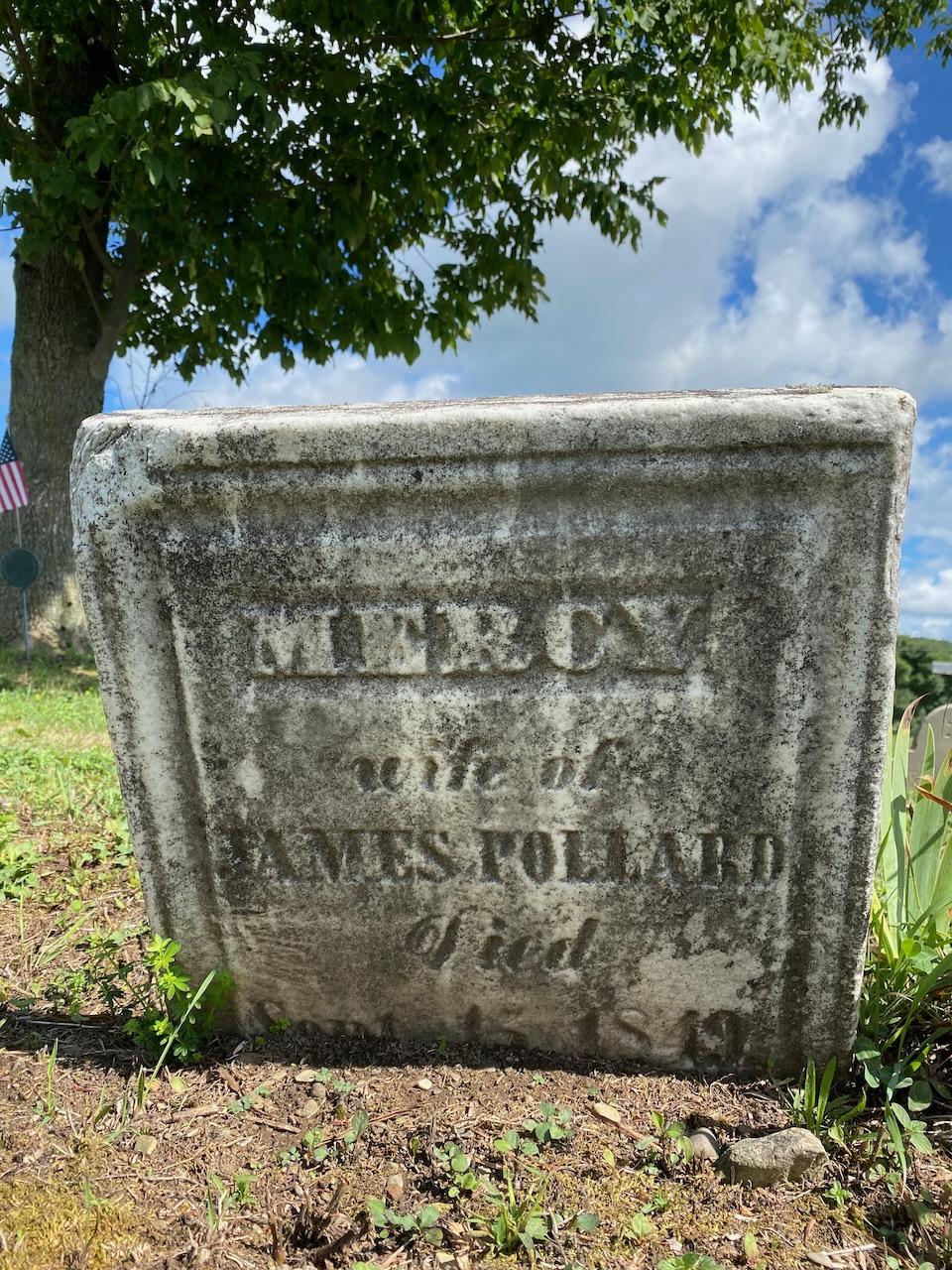
So why make a grave rubbing, other than for historical research? Grave rubbing is not only great for preserving the information on headstones, it’s also beneficial to the stone itself. Old grave markers can be covered in lichen and other material that could prevent a clear rubbing, so many grave rubbers carry a soft bristled brush with them to gently remove lichen, cleaning the stone for other viewers. Grave rubbings also reveal carvings and words on the stone that would be illegible otherwise. The cemeteries I visited in New York had gravestones that are incredibly old, and I couldn’t read them. I traced my finger along names on the stones to get a better idea of what they said, but I simply couldn’t figure out who was buried under one particular stone from the 1830s. She belongs to a family that my sister Rose wants to research, so she decided to rub it. Rubbing revealed her name wonderfully, along with an inscription that we never would have interpreted.
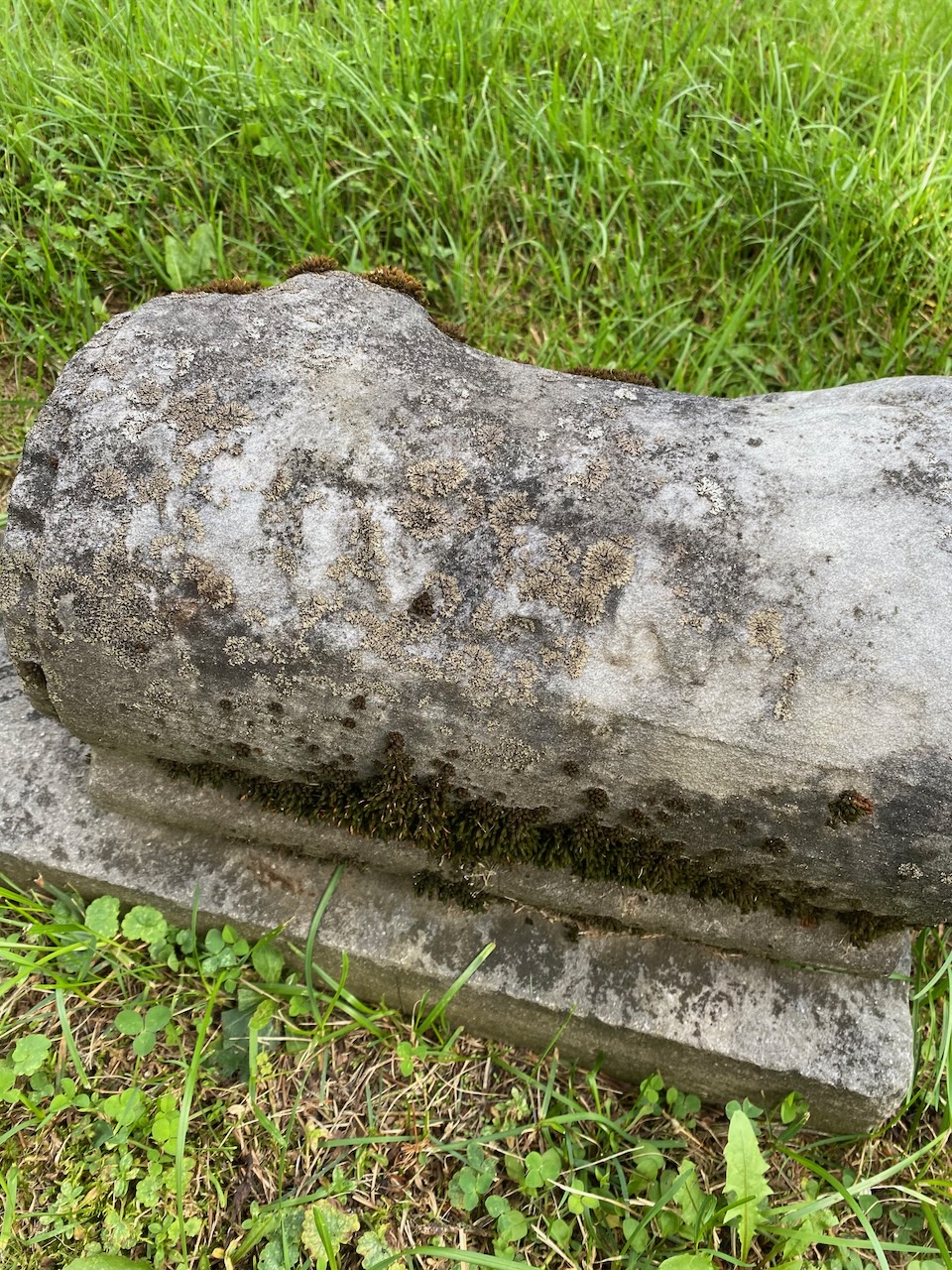
Rubbing graves is a fun recreational activity and it preserves information that might otherwise be lost to erosion and time. It also leaves you with an amazing memento of your experience.. For more information on how to safely rub graves, check out this article with some good tips.
"Anna" is a teenage girl who loves to write, read, and do just about anything artsy. She enjoys writing about nature crafts and her experiences while learning to hunt and cook wild game. Anna firmly believes that backyard chickens lay the best eggs and that spending time outside with her flock every morning will start the day off happily. She is extremely grateful to her best friend, who inspired her to really take writing seriously. You can find her lost in her latest idea or listening to her sister "Rose" read book quotes. View all posts by Anna